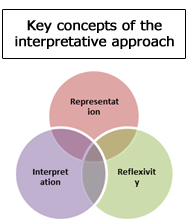
-
 History of Religions
History of the 3 Monotheistic religions (Judaism, Christianity and Islam) and of the main different Christianity confessions (Roman Catholicism, Eastern Catholicism and Eastern Orthodoxy, Anglicanism and Protestantism)
History of Religions
History of the 3 Monotheistic religions (Judaism, Christianity and Islam) and of the main different Christianity confessions (Roman Catholicism, Eastern Catholicism and Eastern Orthodoxy, Anglicanism and Protestantism)
-
 Pedagogical Approaches
New pedagogical approaches to teach history of religion
Pedagogical Approaches
New pedagogical approaches to teach history of religion
-
 Role of Religions in Civilization
How to didactically promote among students of different confessions, the capacity of a critical analysis and understanding of the role played by religions in the history of mankind
Role of Religions in Civilization
How to didactically promote among students of different confessions, the capacity of a critical analysis and understanding of the role played by religions in the history of mankind
-
 Interreligious Students’ Competences
Set of teaching contents, to be used by teachers to highlight and valorize the universal values of tolerance and universalisms that all Monotheistic religions and religious texts contain to promote and sustain mutual understanding among students
Interreligious Students’ Competences
Set of teaching contents, to be used by teachers to highlight and valorize the universal values of tolerance and universalisms that all Monotheistic religions and religious texts contain to promote and sustain mutual understanding among students
-
 Managing Multi-Religious Classes
Teaching Sources to help teachers dealing with multicultural and multi-religious classes
Managing Multi-Religious Classes
Teaching Sources to help teachers dealing with multicultural and multi-religious classes
-
 Introduction
A comparative review of the liturgical celebrations, ceremonies and dietary rules existing in the different religions.
Introduction
A comparative review of the liturgical celebrations, ceremonies and dietary rules existing in the different religions.
-
 Celebrations
Description and comparative analysis of the celebrations of different religions and confessions
Celebrations
Description and comparative analysis of the celebrations of different religions and confessions
-
 Ceremonies
Description and comparative analysis of the ceremonies of different religions and confessions
Ceremonies
Description and comparative analysis of the ceremonies of different religions and confessions
-
 Dietary Rules
Description and comparative analysis of the dietary rules of different religions and confessions
Dietary Rules
Description and comparative analysis of the dietary rules of different religions and confessions
Events
The Pathway through Religions project has been promoted trough conferences and articles.
Partnership
-
 Contractual Partners
From this section it is possible to access to a description of each contractual partner of the Pathway through Religions project.
Contractual Partners
From this section it is possible to access to a description of each contractual partner of the Pathway through Religions project.
-
 Schools
From this section it is possible to access to the information about the schools involved in the Pathway through Religions Project in the European countries involved.
Schools
From this section it is possible to access to the information about the schools involved in the Pathway through Religions Project in the European countries involved.
-
 Associated Partners
As a result of the exploitation activity a number of associated partners officially joined the project in order to contribute to the improvement of the project impact on their target groups and to ensure the project sustainability by continuing using the project deliverables in the next years.
Associated Partners
As a result of the exploitation activity a number of associated partners officially joined the project in order to contribute to the improvement of the project impact on their target groups and to ensure the project sustainability by continuing using the project deliverables in the next years.
This section of the Pathway through Religions portal provides administrative information for the project contractual partners and for the European Commission and it is password protected.
Managing Multi-Religious Classes
Homepage > Teachers’ Guide > Managing Multi-Religious Classes

Teaching Sources to help teachers dealing with multicultural and multi-religious classes
Managing Multicultural and Multi-Religious Classes
5. Interpretive Approach
If we want a truly inclusive intercultural education we need to recognize both the diversity between different cultures and religious traditions and the diversity within those groups. To expand their understanding, students must be engaged in critical examination of their own assumptions. Considering different perspectives and gaining first-hand experience enhances the intercultural competence and critical capacity of the students.
The interpretive approach to studying religion explores multiple perspectives in order to make sense of this complex human phenomenon. It does not seek to promote or undermine spiritual belief or to impose any particular view on the students. Its goal is to engage them in critical examination and to enable them to formulate their own views.
Drawing insights from literary studies, hermeneutics and anthropology, the interpretive approach takes account of the dynamic and irreducibly complex nature of religion and culture and of their interaction. Simplistic representations of homogeneous cultures that are clearly distinct from one another are rejected. Instead, cultures are seen as dynamic, internally contested and overlapping. Culture is not only a possession that one acquires but also a process to which every individual can contribute. Diverse ethnic and religious groups coexist in post-modern pluralistic societies. Anyone can tap into a wide range of cultural resources and make a personal synthesis.
Religion is thus understood as relationship between individuals within the context of particular groups and wider religious traditions. The representation of religions emphasizes the interplay between the particular and the general, operating at three different levels: The interpretive approach considers students’ own perspectives as an important part of the learning process. Pupils continuously compare their own assumptions with insider’s accounts, building self-awareness and intercultural understanding. Thus, interpretation is an infinite cycle of gathering knowledge and evaluating its meaning.
The interpretive approach considers students’ own perspectives as an important part of the learning process. Pupils continuously compare their own assumptions with insider’s accounts, building self-awareness and intercultural understanding. Thus, interpretation is an infinite cycle of gathering knowledge and evaluating its meaning.
Students are asked to reflect on the impact of their learning on their previous understanding. Learning materials and methods should also be critically examined. Exploring the relationship between the learning material and the knowledge and experience of the pupils becomes the point of the lesson. Students are encouraged to engage constructively with difference, challenging previously unquestioned assumptions and finding points of contact and overlap.
The interpretive approach to studying religion explores multiple perspectives in order to make sense of this complex human phenomenon. It does not seek to promote or undermine spiritual belief or to impose any particular view on the students. Its goal is to engage them in critical examination and to enable them to formulate their own views.
Drawing insights from literary studies, hermeneutics and anthropology, the interpretive approach takes account of the dynamic and irreducibly complex nature of religion and culture and of their interaction. Simplistic representations of homogeneous cultures that are clearly distinct from one another are rejected. Instead, cultures are seen as dynamic, internally contested and overlapping. Culture is not only a possession that one acquires but also a process to which every individual can contribute. Diverse ethnic and religious groups coexist in post-modern pluralistic societies. Anyone can tap into a wide range of cultural resources and make a personal synthesis.
Religion is thus understood as relationship between individuals within the context of particular groups and wider religious traditions. The representation of religions emphasizes the interplay between the particular and the general, operating at three different levels:
- the tradition – the wide picture, encompassing all branches, historical developments and key concepts;
- the group – a concrete denominational, sectarian or ethnic group;
- the individual – a unique human being, subject to many influences;
 The interpretive approach considers students’ own perspectives as an important part of the learning process. Pupils continuously compare their own assumptions with insider’s accounts, building self-awareness and intercultural understanding. Thus, interpretation is an infinite cycle of gathering knowledge and evaluating its meaning.
The interpretive approach considers students’ own perspectives as an important part of the learning process. Pupils continuously compare their own assumptions with insider’s accounts, building self-awareness and intercultural understanding. Thus, interpretation is an infinite cycle of gathering knowledge and evaluating its meaning.
Students are asked to reflect on the impact of their learning on their previous understanding. Learning materials and methods should also be critically examined. Exploring the relationship between the learning material and the knowledge and experience of the pupils becomes the point of the lesson. Students are encouraged to engage constructively with difference, challenging previously unquestioned assumptions and finding points of contact and overlap.
Online Resources
- Connect: Intercultural Insights for Global Citizens on Interfaith DialogueThis e-zine includes articles on interfaith dialogue practices to be used in the classroom, after school or with adults. Read about walking in someone else’s shoes as he fasted for a day during the holy Muslim season of Ramadan. How World War II ambulance drivers from the UK documented and discussed different faiths during their experiences in Lebanon.
- Studying Religions: The Interpretive Approach in BriefRobert Jackson's interpretive approach to learning about religions is well-known for its sensitivity to individual differences and to diversity within religious traditions. Here is a short account of the interpretive approach, including references to some of Jackson's publications on this topic.
- Taking a Closer Look at Religions Around the WorldThis article offers a starting point for exploring religions and faith traditions, creating an ongoing respectful dialogue about religious tolerance. Includes activities and projects that can easily be expanded through further research. The article encourages in-depth study of these topics over a longer period of time.
Practical Activity
- Research ProjectThis activity introduces a particular religious tradition, starting from the previous knowledge of the students and their points of interest. Students work collaboratively to develop their research projects and present their findings to the class.


